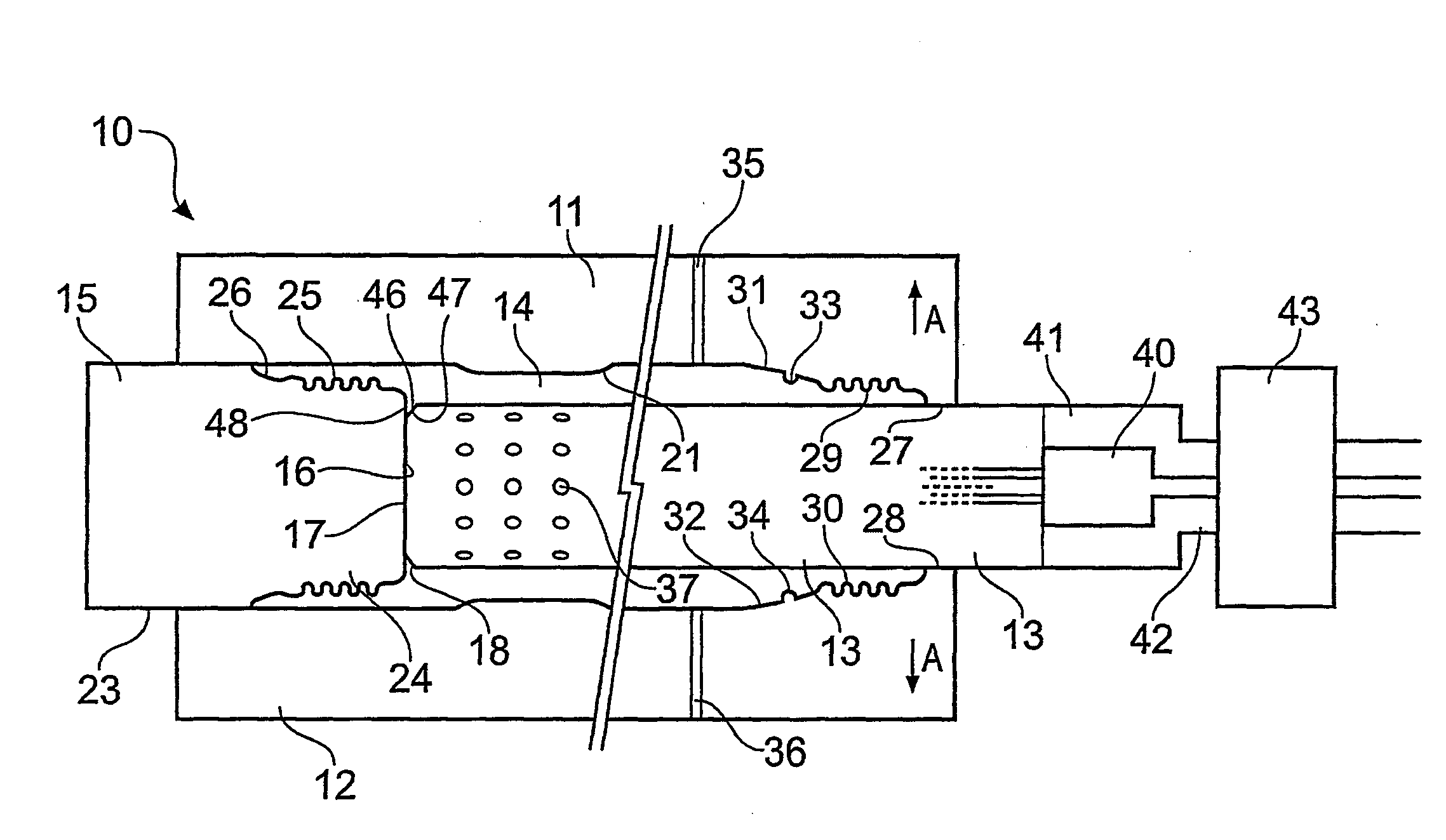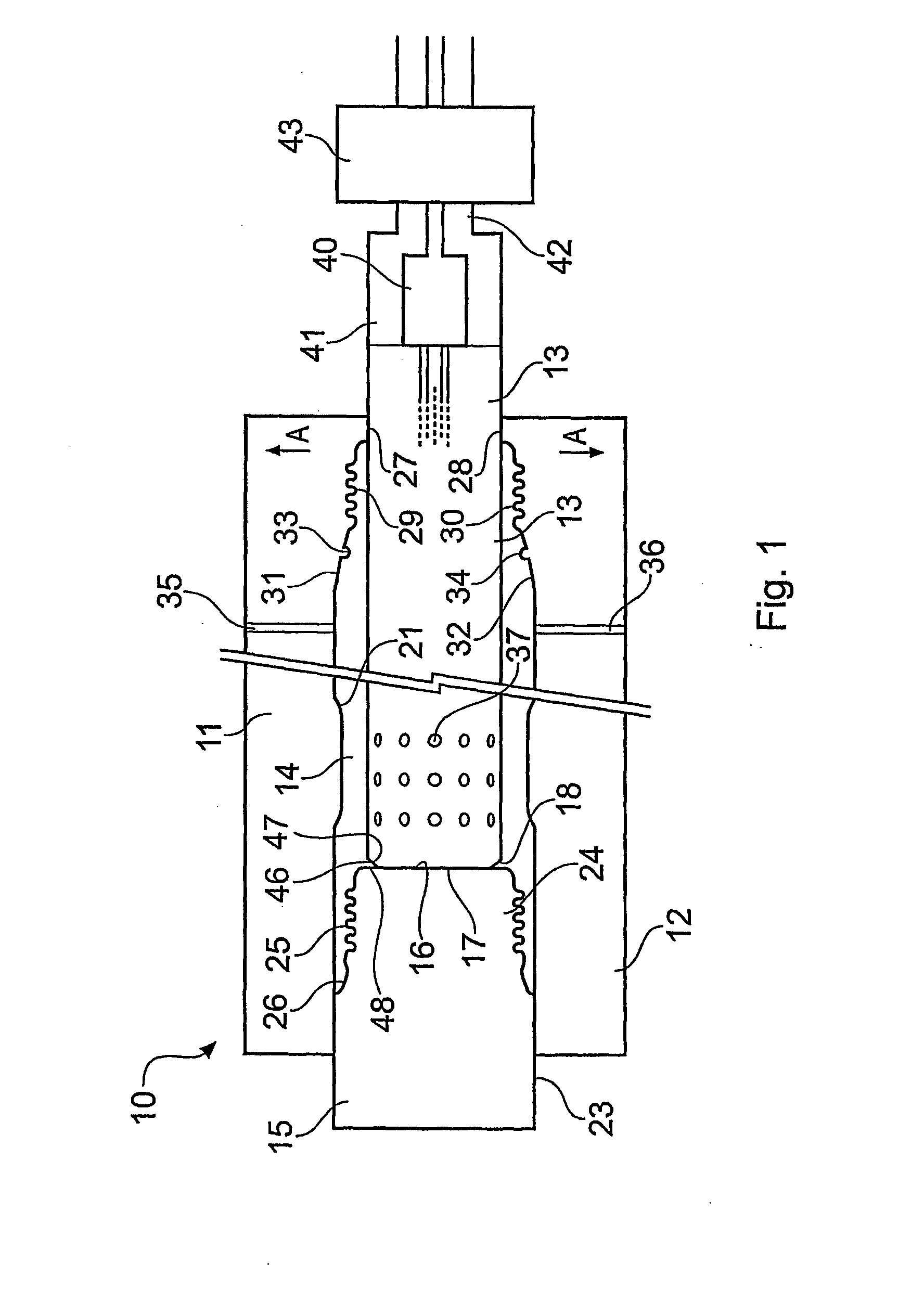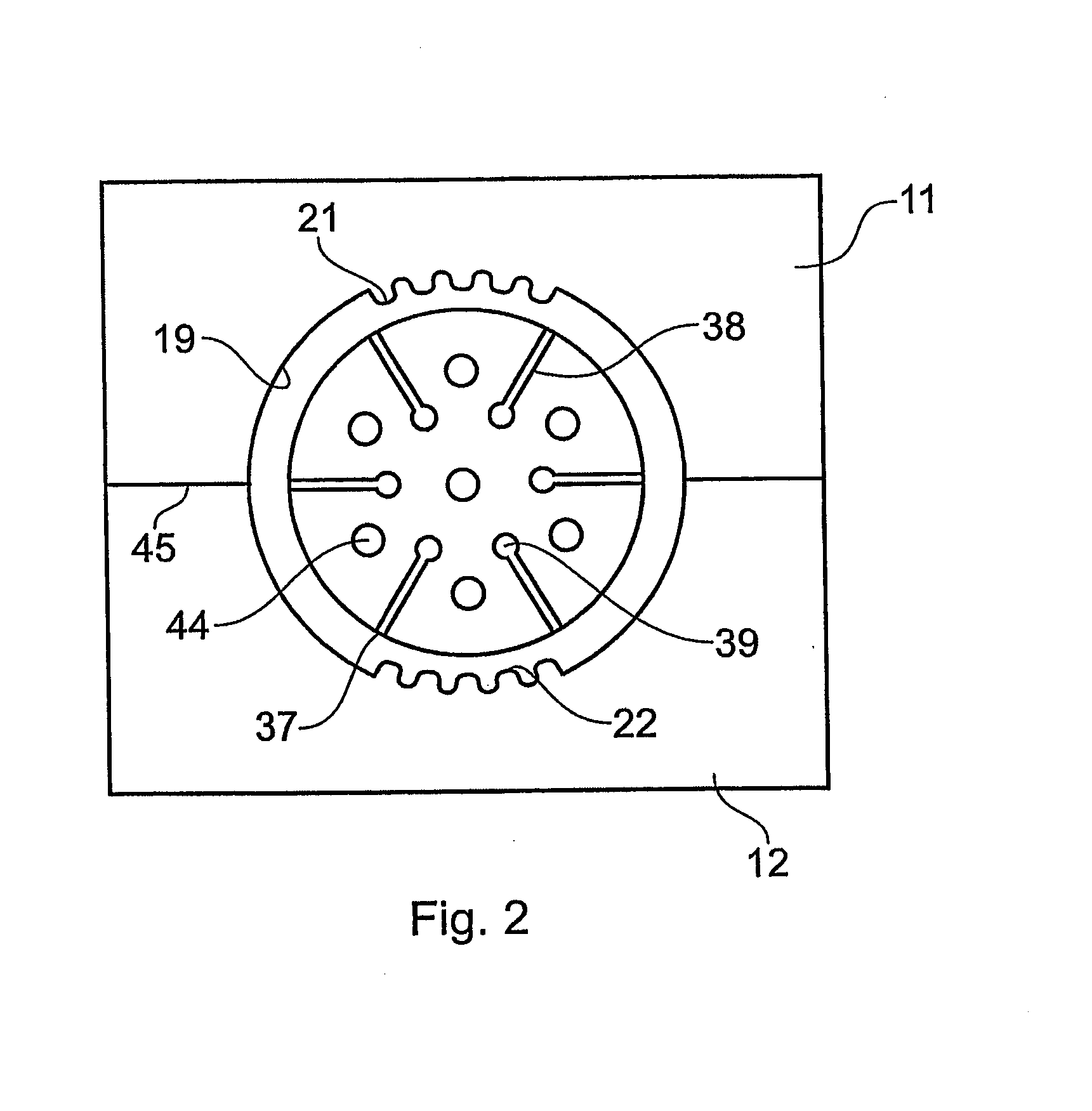Method and apparatus for the production of hollow molded articles and a hollow molded article made by the method
a technology of hollow molded articles and methods, which is applied in the direction of rigid pipes, screw threaded joints, applications, etc., can solve the problems of insufficient physical insufficient strength of extruded pipes, and insufficient thickness of extruded pipes. achieve the effect of greater forces
- Summary
- Abstract
- Description
- Claims
- Application Information
AI Technical Summary
Benefits of technology
Problems solved by technology
Method used
Image
Examples
Embodiment Construction
[0045]Referring first to FIG. 1, there is shown a multi-part mold structure 10 for forming a cylindrical article about a centre line CL. The mold structure 10 essentially comprises upper and lower main mold parts 11, 12 defining a mold cavity within which is located an elongate mandrel 13. The mold is significantly longer than it is wide, in order to make a molded article approximately one half of a metre in length and ten centimetres in diameter. For this reason the two ends of the mold have been shown in detail with a break line in the centre which represents the extended length of the mold.
[0046]The two mold parts 11, 12 and the mandrel 13 define an annular mold cavity generally indicated 14 having specific features which will be described in more detail below.
[0047]At the left hand end as viewed in FIG. 1 the mold cavity 14 is closed by a terminal mold part 15 which is shaped with a flat end face 16 which engages tightly with the corresponding flat end face 17 of the mandrel 13....
PUM
| Property | Measurement | Unit |
|---|---|---|
| length | aaaaa | aaaaa |
| area | aaaaa | aaaaa |
| pressure | aaaaa | aaaaa |
Abstract
Description
Claims
Application Information
 Login to View More
Login to View More - R&D
- Intellectual Property
- Life Sciences
- Materials
- Tech Scout
- Unparalleled Data Quality
- Higher Quality Content
- 60% Fewer Hallucinations
Browse by: Latest US Patents, China's latest patents, Technical Efficacy Thesaurus, Application Domain, Technology Topic, Popular Technical Reports.
© 2025 PatSnap. All rights reserved.Legal|Privacy policy|Modern Slavery Act Transparency Statement|Sitemap|About US| Contact US: help@patsnap.com



